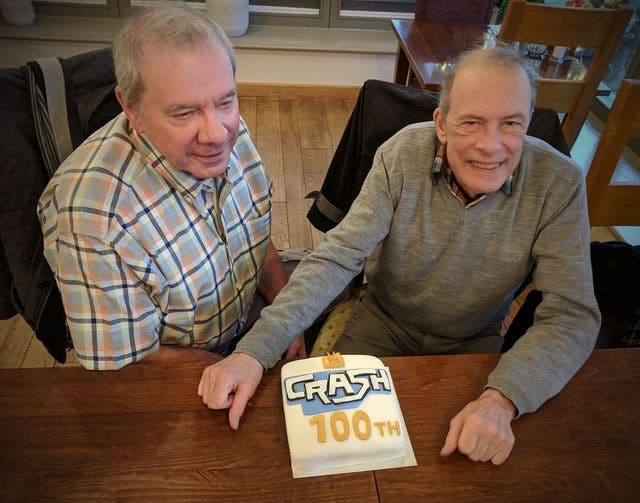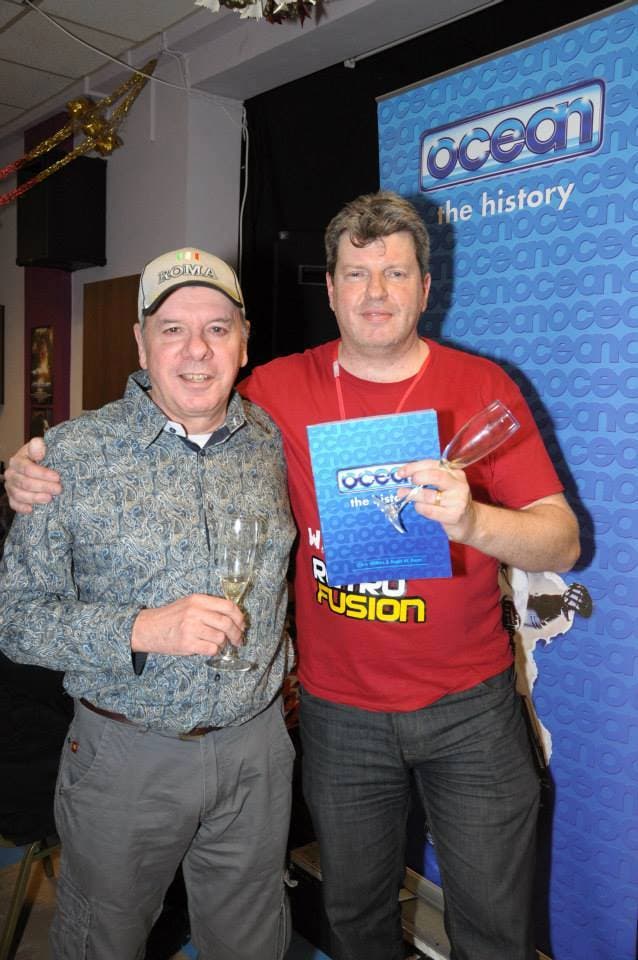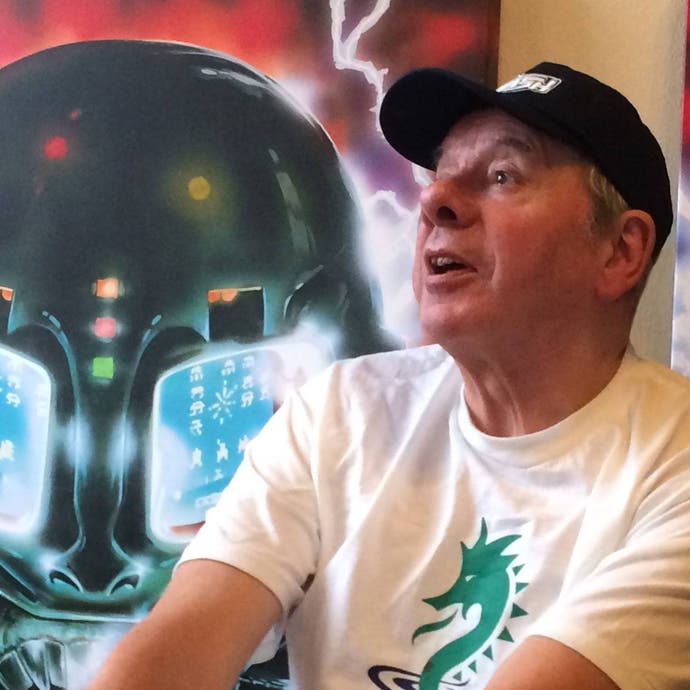Remembering video game magazine legend Roger Kean
Wisdom and warmth.
Earlier this week we sadly lost Roger Kean, co-founder of the legendary Crash and Zzap!64 magazines amongst many others. If you'd like to learn more about the legacy of Crash, Graeme told its story in brilliant detail for us back in 2017.
As with the passing of his friend, colleague and partner Oliver Frey, the death of Roger Kean, anticipated but no less sad, has dismayed so many retro gaming fans in the last week, particularly those affiliated with the ZX Spectrum and Commodore 64 computers.
Together with Frey and his brother Franco, Kean formed Newsfield Publishing in 1983. Both Kean and Frey had cut their publishing teeth at the London publisher Alan Purnell. The experience was a crash course in the process of publishing, working with CRTronic typesetting, photo-mechanical tints, rotary drum laser scanning and more, all proving invaluable when later setting up Newsfield.

As 1982 closed, Franco Frey suggested to Kean and his brother that mail order business, selling ZX Spectrum games, could be a profitable venture. Throughout 1983, the trio built up their business, promoting the games via a slim printed catalogue. As the UK computer game scene exploded in 1983, Kean and the Freys were serendipitously at its heart. Frey's art had already been gracing the cover and pages of the catalogue; when a WH Smith's news buyer spotted it, the idea of an actual magazine dedicated to the Spectrum games scene was born - as was Crash Magazine.
Written and edited almost entirely by Kean (often under his nom de plume of Lloyd Mangram), Crash was a huge success, quickly inspiring a sister Commodore 64 magazine, Zzap!64. While not a gamer himself, Kean understood how to create magazines and connect them with their audience. A critical early decision was to let local Ludlow schoolchildren review the games in Crash, slowly bringing the better and keener writers into the Newsfield fold.

As editor, Kean vehemently supported his young charges. When 16-year-old Crash reviewer Ben Stone attracted the ire of one company's PR department for a less-than-enthusiastic analysis, the result was a massive loss in advertising revenue. Despite the financial implications, Kean backed the visibly distressed Stone, and the score stood. Crash's editor was acutely aware this was the key to Crash's and Newsfield's success: you could trust its reviews. And it wasn't just the journalists who adored Kean and his fellow Newsfield founders. "They were the nicest bosses that I have ever had the pleasure to work for," remembers mail order and subscription manager Denise Roberts, one of Newsfield's first full-time employees. "Roger nicknamed me 'Denise'll', which was short for 'Denise will do it'; it became a great joke, and we still laughed about him calling it me when we last met up."
Yet it was in the editorial department where Kean's influence was most felt, as Zzap!64 alumnus Julian Rignall noted on Twitter, "I will always remember how Roger taught me that an editorial policy based on being entertaining, informative, enthusiastic, and honest was key to making publications that truly resonated with their audience." Newsfield, driven chiefly by Kean, also championed the use of technology, leading the way in new printing methods and word processors instead of typewriters. So much so, when Rignall joined EMAP in 1988, he was horrified to be back on a typewriter, having spent most of his years on Zzap!64 creating copy on an Apricot computer.
While full of the necessary talent and skills, it was undoubtedly a case of 'right place, right time' for Kean and Newsfield. Players relied on monthly magazines for their gaming news, reviews and tips. Crash, Zzap!64 and the short-lived Amstrad magazine, Amtix, all focused on these aspects, eschewing the type-in listings and detailed hardware reviews featured in their rivals' pages. By 1988, Newsfield housed over 80 full-time staff in its Ludlow offices and had its own software label, Thalamus. While nominally still involved, Kean increasingly moved away from the roles he loved: editing, writing and crafting magazines.
Fortunately, in recent years, following the collapse of Newsfield in the early 90s and his subsequent work with Thalamus Publishing, Kean re-discovered these roles thanks to the renewed interest in retro gaming during the mid-00s. Having first spoken to Kean in 2005, Fusion Retro Books founder Chris Wilkins enlisted Kean to help write a book charting the rise and fall of Manchester software house Ocean.

"He was a hugely educated man and knew so much about everything," Wilkins tells me. "Any topic we discussed, he always seemed to know more about it than me, so it always became educational. In terms of producing print, he was the teacher, and I had so much to learn. He passed all he knew on in a way that I could pick up." Ostensibly retired, Kean contributed to subsequent books from Fusion and, in 2020, took undiluted joy from being involved with its rebooted Crash Magazine. His final work for Fusion was, appropriately, designing and writing for the 2021 Zzap!64 annual. Already diagnosed with the insidious condition, Motor Neurone Disease, that would claim his life, Kean infused his editorial with his trademark wisdom and warmth.
And those two traits are perhaps the ones that sum him up best. I was a Crash subscriber back in the day, and reading that magazine felt like being part of a family. Each issue began with Kean's editorial, a combination of deep knowledge of the industry and a kind-hearted tone that steadfastly refused to patronise its readers. Kean's remit, to write for teenage readers as if they were young adults, made Crash and Zzap!64 more lifestyle magazines than specialist periodicals.
When I finally met Kean at a retro gaming event six years ago, I could have bored him and Frey to tears. Not a chance. As with all of those fans eager to discuss their nostalgic memories with the men that helped make them happen, Kean met me with a smile and enthusiasm undimmed by the passing of years and tribulations of running a publishing company. Those of us lucky enough to have met him will miss his words, charm and personality. Yet, as with the artistic talents of his great friend and companion, at least he got to know how much we appreciated it.

